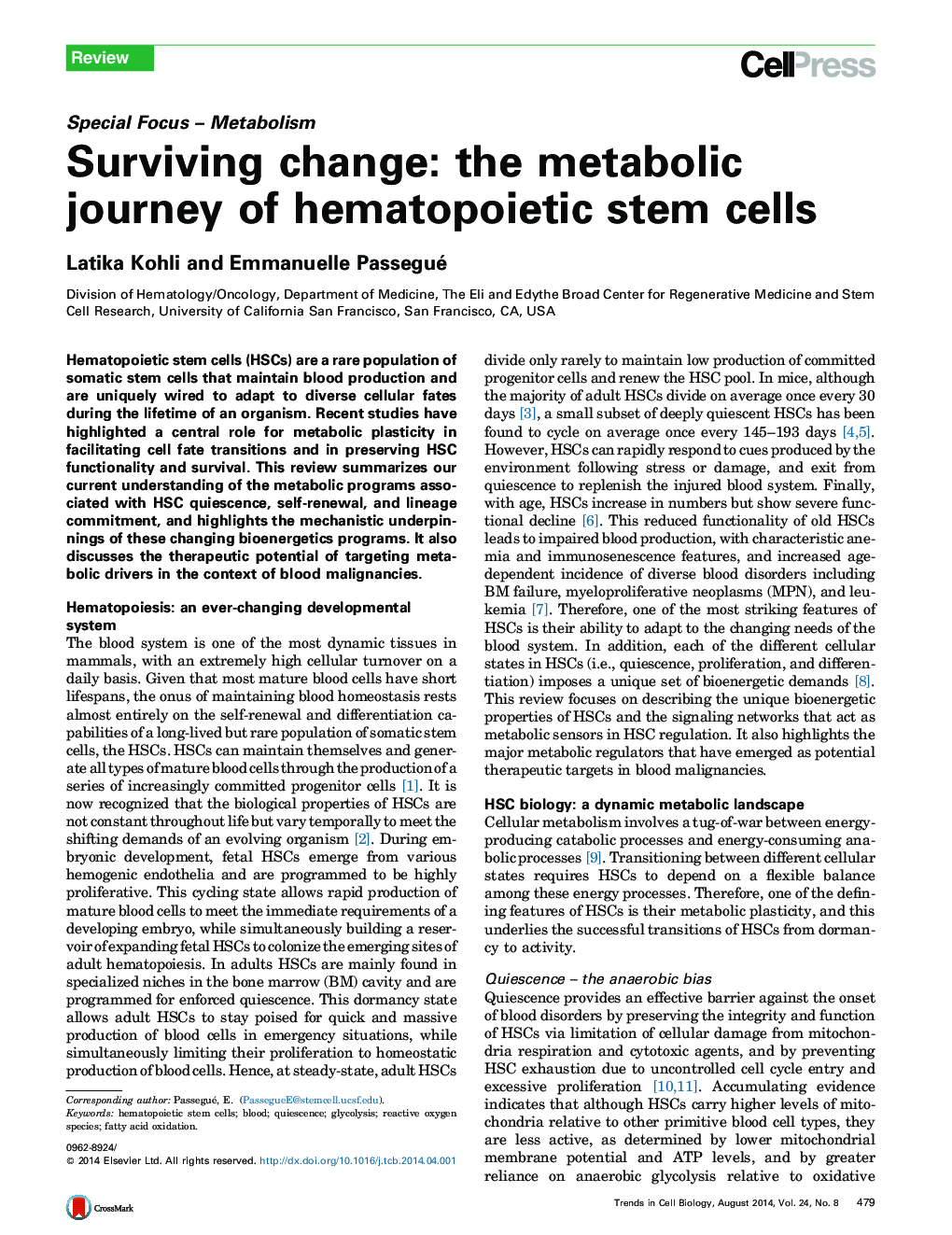| Article ID | Journal | Published Year | Pages | File Type |
|---|---|---|---|---|
| 2204523 | Trends in Cell Biology | 2014 | 9 Pages |
•A dynamic metabolic state underlies fate transitions in HSCs.•A glycolytic bias enforces quiescence whereas fatty acid oxidation influences commitment.•Mitochondria and ROS control the balance between self-renewal and differentiation.•Metabolic energetics offer new strategies to target blood malignancies.
Hematopoietic stem cells (HSCs) are a rare population of somatic stem cells that maintain blood production and are uniquely wired to adapt to diverse cellular fates during the lifetime of an organism. Recent studies have highlighted a central role for metabolic plasticity in facilitating cell fate transitions and in preserving HSC functionality and survival. This review summarizes our current understanding of the metabolic programs associated with HSC quiescence, self-renewal, and lineage commitment, and highlights the mechanistic underpinnings of these changing bioenergetics programs. It also discusses the therapeutic potential of targeting metabolic drivers in the context of blood malignancies.
